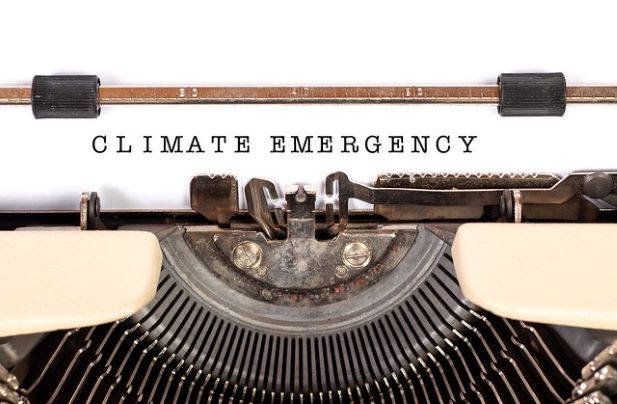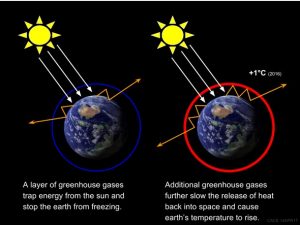

The phenomenon that started mid-March in the UK has reached the top echelons of the UK parliament. The United Kingdom became the first country where parliamentarians have voted to declare a Climate Emergency. The motion asks the U.K. government to achieve net-zero emissions before 2050. It also calls for government officials to come up with proposals on how to fix the U.K.’s natural environment and deliver a “zero waste economy” within the next 6 months
Dozens of local areas around the UK have already declared a climate emergency including Manchester, London, Edinburgh and Bath. However, there is no real consensus on the definition but the demand is for the country to reach carbon neutrality by 2030 as against its current target to reduce carbon emissions by 80% (compared to 1990 levels) by 2050.
They also want the national curriculum reformed to include “the ecological crisis as an educational priority”.
On the other hand, Extinction Rebellion – the group that held recent protests in UK cities including London, Manchester and Newcastle – also wants a new legally binding target set for the UK to reduce its carbon emissions to net zero by 2025, a full 25 years before the government target.
So what is Climate Emergency? Let’s take a look…
The basis of climate emergency is quite simple. It is built on the belief, based on scientific evidence, that humans activities have resulted in additional greenhouse gases in our atmosphere. These have heated our planet and at current levels are already a true disaster on a global scale. Unless emissions are stopped AND removed, these gases will result in a level of global warming that will be catastrophic for humanity and much of the world’s remaining ecosystems.


An ethical and moral response to this emergency would be based around the goal of maximum protection of human and non-human life. Maximum protection would mean reversing global warming and even creating global cooling as soon as possible.
To create a Global Cooling we need to:
If we don’t succeed in creating a global cooling impact will be disastrous. According to Philip Sutton from RSTI, even if we stabilize temperatures at the Paris Agreement’s best case cap of +1.5°C, this will:
You can read more about Philip Sutton’s paper “Local-first implementation” at page 12.
The effects of global warming, despite denial from influential pockets of deniers in countries like the US, has already been felt by island nations. Indonesia is planning to shift its capital from Jakarta, as Indonesian President Joko Widodo decided on Monday after a cabinet meeting to push forward on this long-anticipated plan. It’s finally becoming reality as the city’s reached a tipping point with congestion, air pollution, and, well, climate change. Jakarta is the world’s fastest sinking capital in the world, parts of which are already below sea level, has sunk 13 feet in the past 30 years. Indonesia is not alone, many paradise islands are submerging; like in the Pacific –Samoa, French Polynesia, Vanuatu, Fiji, and Hawaii –are suffering the effects of climate change, especially in the form of increasingly frequent and intensive cyclones and other storms like devastating tsunamis.
Closer to our home, many parts of Bangladesh are under severe threat of future sea-level submergence, according to a recent study. Nearly 200,000 coastal residents will be forced to migrate to inland areas to find alternative livelihoods as the soil salinity peaks. The country’s population at risk of sea-level rise is expected to touch 27 million by 2050, as per the United Nation’s Intergovernmental Panel on Climate Change (IPCC). Even the intensity of cyclones in the Bay of Bengal, which has been going up again, has been laid at the door of climate change.
When all the warning bells are blaring, countries like Scotland, Wales, and the latest UK decided to follow the example of dozens of cities in Australia, Canada, the United Kingdom and the United States that have declared a climate emergency after activists lobbied their local governments to take action against global warming. Germany and Switzerland may soon join the ranks as the students are pushing cities like Zurich and Erlangen to declare an environmental emergency after Basel successfully did so.
Green leaders all around the world have been trying to make some progress for Climate change. While the formula “climate emergency” may be catchy, it is hardly specific. But what would declaring a “climate emergency” concretely mean for the country, is still unclear for many leaders? We may not like it but achieving zero-net carbon emissions before 2030, as suggested by environmentalist collective Extinction Rebellion is still beyond ambitious for many and unrealistic for many countries, until and unless there is a concrete plan signed, sealed and delivered. It would require massive changes to infrastructure and large-scale reforestation and rewilding programmes and deep decarbonization of every sector that has been profiting for far too long at the expense of the world’s resources and environment.
On the other hand, it is also not as wildly expensive, or likely to have a chilling effect on growth as pessimists have been arguing. In fact, the costs needed to achieve net zero emissions are coming closer to the figure estimated to achieve 80% reduction that countries committed to.
In a significant move toward advancing green energy and industrial growth in the state, Himachal…
Golabl chemical conglomerate BASF has announced that its now offering the world’s first biomass-balanced polyethersulfone…
In a crucial stint to bolster the biogas sector and sustainable dairying in the country,…
TotalEnergies SE has received approval to proceed with its Middlebrook solar and battery project in…
Andhra Pradesh Chief Minister Chandrababu Naidu has inaugurated the Rs 1,000-crore green hydrogen plant of…
The BITS Pilani has developed an innovative solution for managing landfill leachate, domestic septage, and…